《英国英语语音学和音系学》
| 作者 | 张凤桐编著 编者 |
|---|---|
| 出版 | 成都:四川大学出版社 |
| 参考页数 | 501 |
| 出版时间 | 1996(求助前请核对) 目录预览 |
| ISBN号 | 7561411359 — 求助条款 |
| PDF编号 | 87535108(仅供预览,未存储实际文件) |
| 求助格式 | 扫描PDF(若分多册发行,每次仅能受理1册) |

CONTENTS1
序 王宗炎1
前言1
PART ONE PRELIMINARIES1
1.INTRODUCTION1
2.WHAT IS PHONOLOGY?3
2.1 The medium of language is sound3
2.2 Phonetics and linguistics4
2.3 Phonetics and phonology5
2.4 Phonemes and allophones9
2.5 Redundancy and distinctiveness10
2.6 Phonetic transcription and phonemic transcription13
2.7 Prosodic phonology and suprasegmental phonology14
2.7.1 Length15
2.7.2 Stress15
2.7.3 Intonation16
2.7.4 Tone20
Key terms and concepts21
Questions and exercises22
3.2 The air-stream mechanism23
3.1 Introduction23
3.THE MECHANISM OF SPEECH PRODUCTION23
3.3 The vocal cords24
3.4 The pharynx26
3.5 The soft palate26
3.6 The roof of the mouth27
3.7 The tongue28
3.8 The teeth28
3.9 The lips29
3.10 The active and passive articulators30
Questions and exercises31
Key terms and concepts31
4.THE SYLLABLE:VOWEL AND CONSONANT33
4.1 The syllable33
4.2 Vowel and consonant35
4.3 Vowel-likes,semi-consonants or semi-vowels38
4.4 Vocoids and contoids38
Key terms and concepts41
Questions and exercises41
5.DESCRIPTION AND CLASSIFICATION OF CONSONANTS42
5.1 Description of consonants42
5.2 Place of articulation43
5.3.1 Complete closure48
5.3 Manner of articulation48
5.3.2 Intermittent closure49
5.3.3 Partial closure50
5.3.4 Narrowing50
5.3.5 Approximants50
5.4 Fortis and Lenis51
Key terms and concepts52
Questions and exercises52
6.DESCRIPTION AND NAMING OF VOWELS54
6.1 Production of vowels54
6.2 Close,half-close,half-open,open55
6.3 Front,central,back56
6.4 Rounded and unrounded58
6.5 Tense and lax58
6.6 Oral vowels and nasal vowels60
6.7 Monophthongs and diphthongs61
6.8 Retroflexed vowels62
Key terms and concepts63
Questions and exercises64
7.CARDINAL VOWELS AND VOWEL TRANSCRIPTION65
7.1 History65
7.2 The vowel limit67
7.3.1 Cardinal vowels 1 and 568
7.3 Description of the cardinal vowels68
7.3.2 Cardinal vowels 2,3,4 and 6,7,869
7.3.3 Lip positions of the cardinal vowels70
7.3.4 The secondary cardinal vowels71
7.4 Principles of vowel transcription72
Key terms and concepts73
Questions and exercises73
8.GROUPING PHONES INTO PHONEMES75
8.1 The phoneme as a phonetic reality75
8.2 Complementary distribution76
8.3 Phonetic similarity77
8.4 Free variation79
Key terms and concepts81
Questions and exercises81
PART TWO BRITISH RECEIVED PRONUNCIATION82
9.INTRODUCTION82
9.1 Aims82
9.2 The standard of British English pronunciation84
9.3 Jones’definition of RP is no longer valid86
9.4 Gimson:the conservative nature of Jones’speech88
9.5 Gimson:the instability of advanced RP90
9.6 Gimson’s conclusion92
9.7 The importance of a good pronunciation94
Key tems and concepts96
Questions and exercises97
10.THE ENGLISH VOWELS98
10.1 RP vowel system98
10.2 Characteristics of modern RP vowels99
10.3 Classification of RP vowels101
Key terms and concepts105
Questions and exercises106
11.PURE VOWELS107
11.1 English and Chinese pure vowels compared107
11.2 /i:109
11.3 /?111
11.4 /e113
11.5 /?114
11.6 /?115
11.7 /?:117
11.8 /?118
11.9 /?:120
11.10 /?121
11.11 /u:122
11.12 /?:124
11.13 /?125
Key terns and concepts128
Questions and exercises128
12.DIPHTHONGS130
12.1 English diphthongs in comparison with PTH and SCH diphthongs130
12.2 /e?132
12.3 /a?135
12.4 /?136
12.5 /?137
12.6 /?139
12.7 /?140
12.8 /?142
12.9 /?143
Key terms and concepts145
Questions and exercises145
13.WEAK FORMS AND STRONG FORMS146
13.1 Weak forms-normal forms146
13.2 Features of weak forms147
13.3 Conjunctions148
13.4 Pronouns149
13.5 Verbs150
13.6 Determiners153
13.8 There154
13.7 Prepositions154
13.9 Contracted forms155
13.10 The use of strong forms157
Key terms and concepts157
Questions and exercises158
14.THE ENGLISH CONSONANTS160
14.1 RP consonant system160
14.2 English and Chinese consonant systems compared162
14.3 Voiced or voiceless?165
14.4 Strong and weak consonants167
Key terms and concepts168
Questions and exercises169
15.PLOSIVES170
15.1 Three stages of a plosive170
15.2 Phonetic and phonemic features of English plosives170
15.3 The release stage of English plosives173
15.4 Bilabial plosives/p,b179
15.5 Alveolar plosives/t,d181
15.6 Velar plosives/k,g183
Key tems and concepts186
Questions and exercises186
16.1 Definition187
16.AFFRICATES187
16.2 General comments188
16.3 Palato-alveolar affricates/t?,d?189
16.4 Post-alveolar affricates/tr,dr191
Key tems and concepts194
Questions and exercises194
17.FRICATIVES195
17.1 Phonetic and phonemic features of English fricatives195
17.2 Main deficiancies of Chinese learners197
17.3 Labio-dental fricatives/f,v199
17.4 Dental fricatives/?,?201
17.5 Alveolar fricatives/s,z203
17.6 Palato-alveolar fricatives/?,?208
17.7 Glottal fricative/h211
Key terms and concepts212
Questions and exercises213
18.NASALS214
18.1 The English nasal consonant system214
18.2 Some comments on teaching nasals215
18.3 Bilabial nasal/m216
18.4 Alveolar nasal/n218
18.5 Velar nasal/?220
18 6 Nasal assimilations222
18.7 Sonorant consonants and syllabic nasals223
Key terms and concepts224
Questions and exercises225
19.LATERALS226
19.1 The Chinese lateral227
19.2 Main allophones of the RP/l/phoneme227
19.2.1 Clear〔l〕227
19.2.2 Dark〔?〕227
19.2.3 Syllabic〔l〕228
19.2.4 Devoiced〔?〕229
19.3 Alveolar lateral/l230
Questions and exercises234
Key terms and concepts234
20.APPROXIMANTS235
20.1 Frictionlessness-the most important thing235
20 2 Post-alveolar approximant/r236
20.3 Main allophones of/r239
20.4 Linking/r/and intrusive/r240
20.5 Unrounded palatal semi-vowel /j242
20.6 Main allophones of/j244
20.7 Labio-velar semi-vowel/w245
20.8 Main allophones of/w247
Questions and exercises248
Key tems and concepts248
21.PHONOTACTICS249
21.1 Phonotactics249
21.2 The nature of the English syllable250
21.3 The structure of the English syllable251
21.3.1 Syllable onsets252
21.3.2 Syllable terminations253
21.4 Pronunciation of-s endings256
21.5 Pronunciation of-ed endings258
Key terms and concepts260
Questions and exercises260
22.1 Introduction262
22.PHONOLOGICAL RULES262
22.2 Phonological rules263
22.3 Some English phonemes and their allophones270
22.3.1 The allophones of/P270
22.3.2 The allophones of/b271
22.3.3 The allophones of /t271
22.3.4 The allophones of/d272
22.3.5 The allophones of/k272
22.3.6 The allophones of/ɡ272
22.3.11 The allophones of/z273
22.3.10 The allophones of/s273
22.3.8 The allophones of/v273
22.3.9 The allophones of/?273
22.3.7 The allophones of/d?273
22.3.12 The allophones of/m274
22.3.13 The allophones of/n274
22.3.14 The allophones of/?274
Key tems and concepts275
Questions and exercises275
23.WORD ACCENTUAL PATTERNS276
23.1 Accent276
23.2 What makes a syllable more prominent?277
23.3 Primary and secondary accentuation278
23.4 Word accentual patterns279
23.5 Compound words281
23.6 Accentuation of idiomatic expressions284
23.7 The intermediate accent rule286
23.8 Chinese word accentual patterns288
23.9 Placement of accent within the word289
23.9.1 The verb rule289
23.9.2 The noun rule291
23.9.3 The adjective rule292
23.10 Word accent mistakes heard from Chinese learners292
Key terms and concepts293
Questions and exercises294
24.ENGLISH RHYTHM295
24.1 Rhythm295
24.2 Syllable-timed rhythm and stress-timed rhythm297
24.3 Foot299
24.4 Influence of rhythm upon the length of RP vowels301
24.5 Is Chinese a syllable-timed language?303
Key terms and concepts304
Questions and exercises304
25.2 What is assimilation?309
25.1 Introduction309
25.NATURALPROCESSES AND DISTINCTIVE FEATURES309
25.3 Types of assimilation311
25.4 Elision316
25.5 Liaison318
25.6 Juncture319
25.7 Some examples of the Chinese language321
25.8 Distinctive features322
25.8.1 The major class features322
25.8.2 Manner features323
25.8.4 Place of articulation features324
25.8.3 Tongue body features324
25.8.6 Subsidiary features325
25.8.7 Prosodic features325
25.8.5 Lip shape features325
25.9 Natural classes326
25.10 Natural processes329
Key tems and concepts330
Questions and exercises330
PART THREE ENGLISH INTONATION333
26.INTRODUTION333
27.1 Types of nuclear tone335
27.NUCLEAR TONES IN RECEIVED335
PRONUNCIATION335
27.2 Low Fall337
27.3 High Fall337
27.4 Low Rise338
27.5 High Rise340
27.6 Fall-Rise341
27.7 Fall+Rise343
27.8 Rise-Fall348
27.10 Nucleus and the nuclear tail350
27.9 Mid-Level350
Key terms and concepts354
Questions and exercises355
28.TONE UNIT357
28.1 Definition357
28.2 How to divide a message into tone units358
28.3 Tone unit identification361
28.4 Internal structure of the tone unit363
28.5 Head patterns366
28.5.1 The low head366
28.5.2 The high head367
28.5.3 The falling head368
28.5.4 The rising head369
28.6 Pre-heads370
28.6.1 The low pre-head371
28.6.2 The high pre-head372
Key terms and concepts374
Questions and exercises374
29.ACCENTUAL FUNCTION OF INTONATION377
29.1 Types of tonic placement377
29.1.1 Neutral tonic377
29.1.2 Marked tonic378
29.2.1 Tonic placement for emphasis379
29.2 Tonic placement rules379
29.2.2 Tonic placement for focusing new information381
29.2.3 Syntagmatic focus383
Key terms and concepts384
Questions and exercises384
30.GRAMMATICAL FUNCTION OF387
INTONATION387
30.1 Tonality and tonicity388
30.2 Tone392
Questions and exercises397
Key terns and concepts397
3 1.DISCOURSE FUNCTION AND ATTITUDINAL FUNCTION OF INTONATION398
31.1 The discourse function of intonation398
31.1.1 Tone398
31.1.2 Tonicity399
31.1.3 Intonational subordination401
31.2 The attitudinal function of intonation402
31.3 Other devices for signalling attitudes404
Key terns and concepts405
Questions and exercises406
32.TONE SELECTION408
32.1 Statements409
32.2 Wh-questions414
32.3 Yes/No questions416
32.4 Tag-questions418
32.5 Commands and requests419
32.6 Exclamations and greetings421
32.7 Emphasis424
Key terms and concepts427
Questions and exercises427
33.TONE SEQUENCES429
Key terms and concepts432
Questions and exercises432
34.1 Grammar and intonation435
34.PROBLEMS OF CHINESE STUDENTS IN LEARNING BRITISH ENGLISH INTONATION435
34.2 Pitch and accents438
34.3 Accents and the nucleus441
34.4 Summary445
Questions and exercises445
APPENDIX Ⅰ Answers to Exercises448
APPENDIXⅡ RP Dictation459
APPENDIXⅢ Abbreviations462
REFERENCES464
INDEX(with Chinese translation)476
王宗炎后记501
1996《英国英语语音学和音系学》由于是年代较久的资料都绝版了,几乎不可能购买到实物。如果大家为了学习确实需要,可向博主求助其电子版PDF文件(由张凤桐编著 1996 成都:四川大学出版社 出版的版本) 。对合法合规的求助,我会当即受理并将下载地址发送给你。
高度相关资料
-

- 怎样学习英国语音的音
- 1983 上海:上海外语教育出版社
-

- 现代英语语音学
- 1985
-

- 英语语音学纲要
- 1983
-

- 中国教育史研究 上 中国教会教育史
- 1998.09 重庆:西南师范大学出版社
-
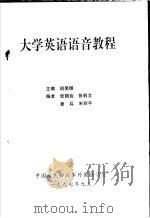
- 大学英语语音教程
- 中国人民解放军外国语学院
-

- 英语语音和音系学 实用教程
- 1989
-
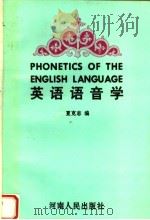
- 英语语音学
- 1996 郑州:河南人民出版社
-

- 交际法学英语语音
- 1999 广东世界图书出版公司
-
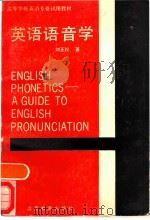
- 英语语音学
- 1990 南京:江苏教育出版社
-
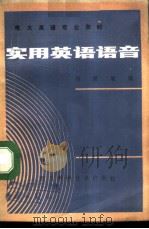
- 实用英语语音
- 1986 成都:四川科学技术出版社
-

- 英语语音问答
- 1980 西安:陕西人民出版社
-
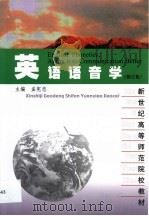
- 英语语音学
- 1999 上海:华东师范大学出版社
-

- 实用英语语音学
- 1992 北京:北京师范大学出版社
-
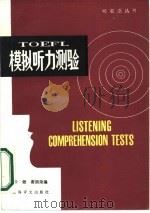
- TOEFL模拟听力测验
- 1986 上海:上海译文出版社
-

- 英语语音实践
- 1990 南京:江苏科学技术出版社
提示:百度云已更名为百度网盘(百度盘),天翼云盘、微盘下载地址……暂未提供。➥ PDF文字可复制化或转WORD